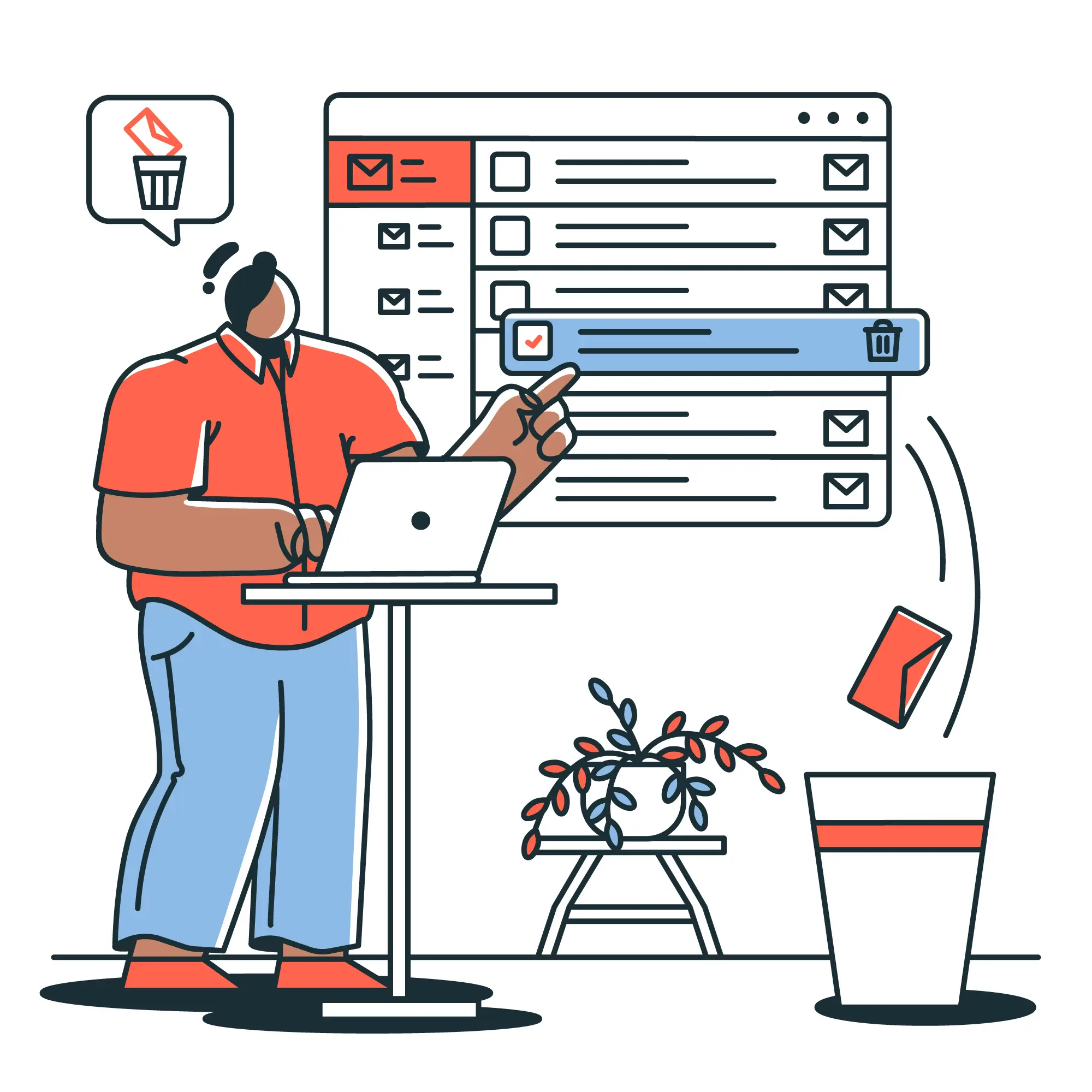How to Write the Best Sales Email Subject Lines
The subject line of your sales email can make or break your B2B outreach.
47% of recipients open emails based on the subject line.
A good first impression also helps email deliverability because 69% of your contact list will mark your message as spam based on the subject line.
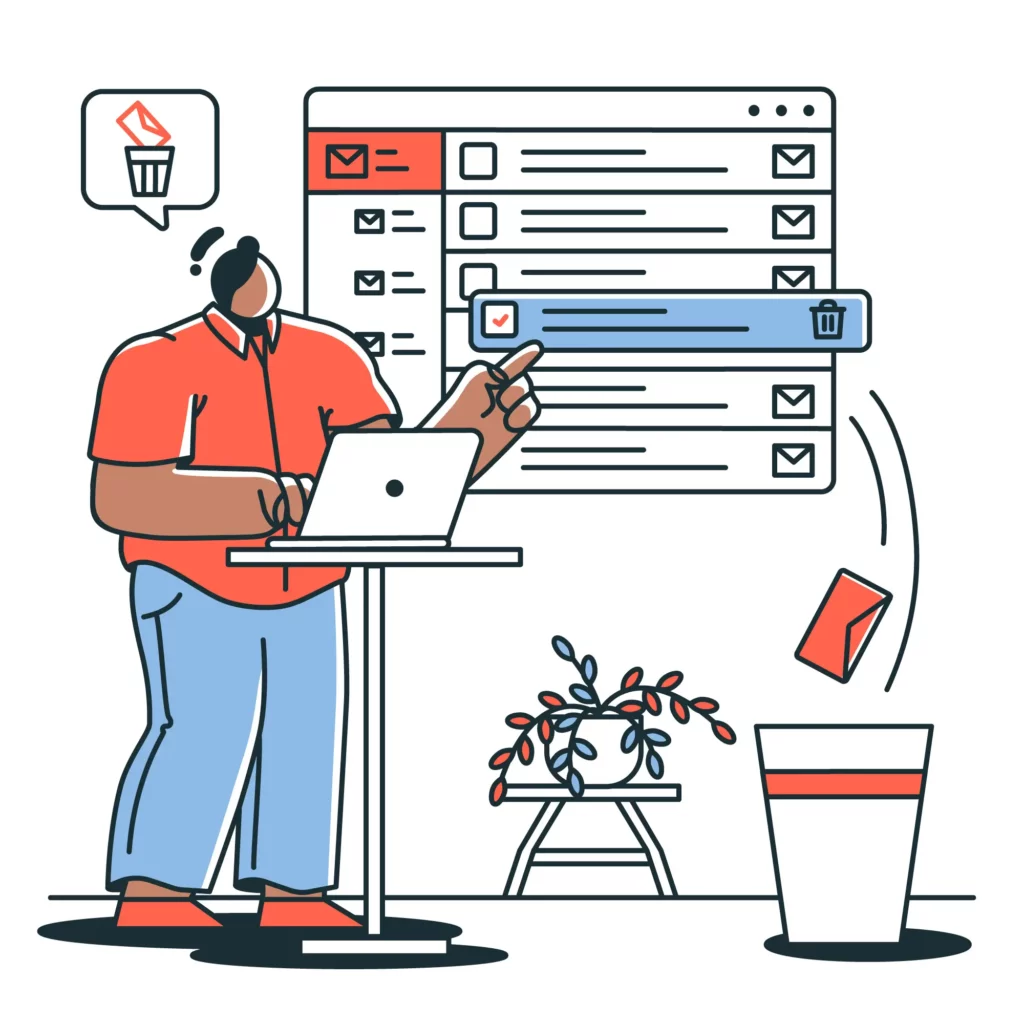
This comprehensive guide will dive deep into how you can craft high-performing email subject lines that engage prospects and consistently convert more opportunities into sales.
Why is the Email Subject Line Important?
The goal of the subject line is to get the email opened.
Anyone can sign up for a free Replyify account, but not everyone will have the same level of success.
When you send an email, you’re competing with dozens of other emails all vying for your recipient’s attention.
Don’t waste this opportunity to incentivize the recipient to open the email and read more.
Examples of subject lines for different industries:
- SaaS: “How to reduce [Company’s] SaaS subscription churn by 20%”
- Marketing/Advertising: “3 ways to boost your next campaign’s ROI”
- Tech: “Stay ahead in [Company’s] industry with [Solution]”
- E-commerce: “One tip to increase conversion rate by 10%”
- Legal: “Do you handle Estate Planning with Bitcoin?”
Pro Tip: When people read a question, they automatically answer it in their heads. A question in the subject line immediately captures attention.
Clarify and expand on the question in the body of your email. Remember that the first few words of your message are visible in the inbox preview so be sure to test on desktop and mobile clients.
Setting Goals for Sales Email Outreach
Most successful B2B sales executives have a goal-oriented sales funnel.
Before you start writing sales emails, be crystal clear on what your goals are with these sales emails to maximize their effectiveness.
Example goals for sales outreach campaigns:
- Generate quick sales with low hanging fruit.
- Build rapport with existing customers.
- Building a loyal customer base.
- Switching from a competitor to you.
- Customize an enterprise deal.
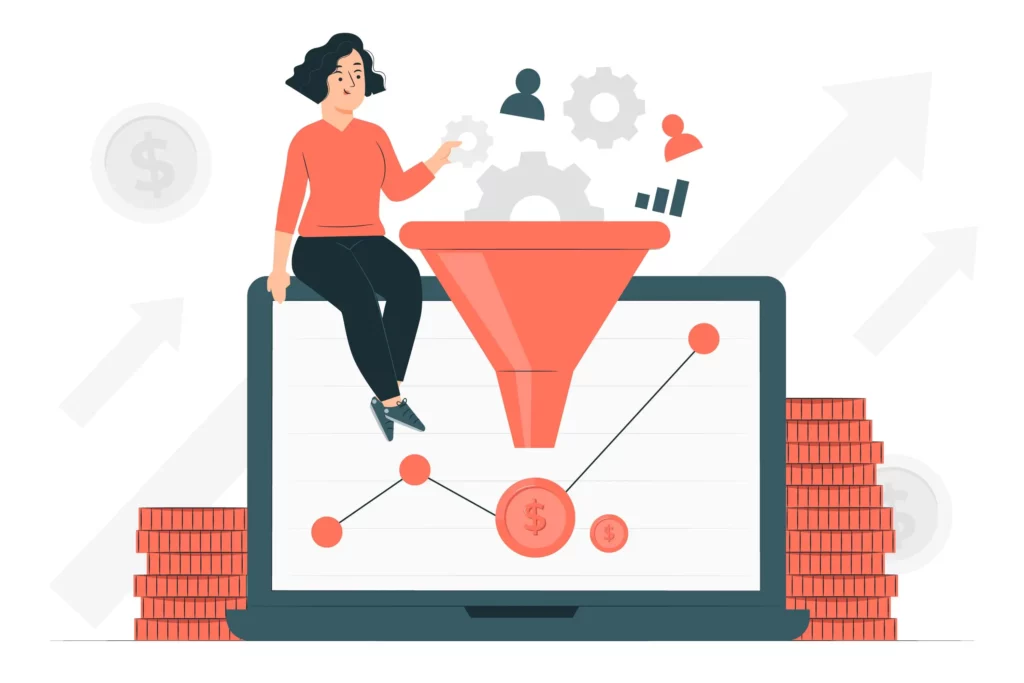
You’ll likely need to create different email campaigns based on the prospect’s stage in the sales funnel.
Understanding your audience’s pain points, priorities and filters can help increase your email engagement which has a direct impact on your book of business.
Most Common Scenarios for Sales Email Outreach
1. Cold Outreach
Cold emailing is not for the faint of heart, but neither is anything about being in sales. Cold email subject lines need to pique curiosity, address a pain point and build trust with a stranger.
Example: “Can [Company] afford to keep missing out on [Specific Opportunity]?”
2. Following-Up
Follow-up emails need to refer back to previous contact while emphasizing value. Avoid being pushy or sounding desperate. Nudge the recipient by reinforcing the benefit to encourage them to move forward.
Example: “Quick follow-up on [Company’s Challenge]”
3. Nurturing Warm Leads
Warm leads have already signaled they are interested in your product or service. Continue providing them value without overdoing your sales pitch. Be insightful and keep them engaged.
Example: “Here’s an insight we thought you’d find useful for [Current Problem]”
4. Closing the Deal
When closing a sale, create a sense of finality and urgency without sounding aggressive. The goal is to move the prospect from consideration to action.
Example: “Trial Expires This Week” or “Can you take a look?”
Adapt your subject line to the situation. If you’re reaching out cold, try to catch their attention and incite curiosity. If you’re following up, refer back to prior interactions and keep the conversation warm.
Tips for Email Subject Line Copywriting
Online ads and email subject lines require similar copywriting skills.
Think like a marketer. Even better, ask someone on your marketing team for their input.
Think about your subject lines like mini-ads with the goal of encouraging the recipient to stop what they’re doing and open your message.
Characteristics of high-performing sales email subject lines:
1. Clear and Concise
The subject line should communicate what the sales email is about. The recipient should immediately recognize why it’s important.
A vague or generic subject like “Following up” or “Checking in” doesn’t differentiate your message in a crowded inbox. Get specific.
Clearly written subject lines perform better because they respect the recipient’s time and set accurate expectations.
- Example: “How [Product] can cut [Company]’s operational costs by 20%”
2. Relevant and Timely
Relevance is about context—both your prospect’s needs and the timing of your email outreach.
You can reference a recent event, trend, or challenge in the recipient’s industry to build rapport by signaling that you’ve done your research.
- Example: “See you at [Industry Conference?]?”
3. Personalized
Personalized subject lines can increase open rates by 26%. From our experience, this is less effective for cold sales email outreach.
Use the recipient’s name, company, or showcase your domain expertise in their industry to signal a 1:1 conversation not a spray and pray email blast.
- Example: “Hey [Name], quick question about [Company]”
4. Urgent and Compelling
Conveying a sense of urgency can compel the recipient to act quickly.
You risk coming off spammy if your pressure tactics are overplayed.
Limited time offers should only be used if you have an established opt-in relationship with the recipient. Referencing deadlines or upcoming events is a great way to get your sales email prioritized.
- Example: “New FTC regulations – 90 days to get compliant”
5. Curiosity and Intrigue
Generating curiosity without being vague is skill.
You can tease a benefit or solution, but leave just enough unanswered to encourage the recipient to open the email for more.
Don’t use clickbait subject lines for your sales emails unless you can follow-through. This is an easy way to lose trust and destroy a relationship before it even begins.
- Example: “Did you see Mike’s post?”
6. Address Pain Points
Call out a pain point in the subject line and irritate the wound in the sales email body.
Focus on the benefits to your customer or prospect. Rattling off your features won’t boost your engagement.
This strategy requires extra time researching but can generate more email opens and replies.
- Example: “Found an SEO error on your website”
Pro Tip: Tweaking your subject lines for different prospect segments is an easy way to add personalization, relevance and authority.
Do’s and Don’ts of Writing Sales Email Subject Lines
Do:
- Keep it short and to the point. Subject lines under 60 characters or 4 words perform best.
- Test subject lines. An A/B test can help you make data-driven decisions.
- Be Relevant: Test new subject lines over time. Using sales memes, industry news, and referencing new technology can pique the reader’s curiosity.
- Personalize your message to increase engagement. Referring to the recipient’s occupation, value, experience, day-to-day responsibilities is proven to be effective for sales emails.
- Be specific. Focus on value propositions not vague promises or feature lists. No one wants to read a long email.
- Flex and stay loose. You’re in the power position, so act like it. You have something they need or don’t know they need yet. It’s ok to write like you speak.
Don’t:
- Don’t use spammy words like “free,” “guaranteed,” or “act now” to land in the inbox.
- Don’t overpromise or use deceptive language to get clicks. This is cringe.
- Don’t forget to read your subject lines out loud. If you wouldn’t open the email based on the subject line, why would you expect your prospect to click?
- Don’t send emails without getting feedback. Some folks write subject lines before the email. In my opinion, it’s easier to write the email content before composing the subject lines.
- Don’t assume. Your product knowledge and how it fits into the recipient’s life puts you in a position to demonstrate your expertise to someone who may only understand their roles and responsibilities. Incentivize your prospect to imagine a world where they’re working with you.
- Don’t be Lazy. Reusing the same subject line across sales campaigns is an obvious sign that you’re inexperienced or just lazy. Don’t make it easy for the recipient to delete the email before reading.

Pro Tip: Take a look at your own inbox. If a subject line is cut off with “…”, would you open the email, delete or mark it as spam? Finding the right balance is tricky and requires experimenting.
There are lots of different ideas about what the ideal subject length is.
Email Marketers have been arguing about it since the very first email was sent.
Best Subject Line Strategies for Sales Emails
The best sales emails are concise, focus on the recipient, and demonstrate value. When prospect sees the benefit right away, they’re more likely to open the email.
Use psychology to adjust your messaging depending on the goal of your email campaign and who you’re reaching out to.
14 Psychological tactics for subject line copywriting:
Provocative Question: “What are your thoughts?” or “Is this what you’re looking for?”
- Put the ball in their court to control the situation as a follow-up to your quote/proposal.
Address Pain Point: “Let’s talk [pain point]”
- Caters to recipients with low attention spans by getting right to the point.
Address Pain Point (Indirectly): “What’s the worst part of [pain point]?” or “Everyone hates…”
- Use this to pique curiosity for the email open then link to related content.
Personalization: “Hey [Name], quick question about [Company’s Current Challenge]”
- Works well for cold outreach where personal connection is key.
Historical Context: “Following up on [__]” or “Been a while since ___”
- More of a traditional networking approach that plays well with older demographics.
The Future: “Next steps to ____” or “When will you be ready to ____”
- Forces the recipient to look ahead and consider a future that includes you.
Value Proposition: “Here’s how we can help [Company] solve [Pain Point]”
- Great for offering a clear solution in industries like tech, SaaS, or consulting.
Common Ground: “[__] suggested I reach out” “[Common Connection’s Name]”
- This is my favorite. Requires some extra research but almost guarantees a response.
Urgency: “Don’t miss out on [Offer]! Only [X] days left for [Company]”
- Creates urgency without feeling spammy, especially for time-sensitive offers.
Curiosity: “The one thing [Competitor] isn’t doing that could help [Company]”
- Engages the recipient by sparking competitive interest or professional FOMO (fear of missing out).
Question: “Is [Product] the solution [Company] needs for [Problem]?”
- Asking a question stimulates engagement by making the recipient think about the solution you’re offering.
Invitation: “[lead co]<>[your co]?” or “LinkedIn” or “Need your input on this”
- Invite the recipient to engage with you. Get creative!
Number/Stat: “3 ways to boost [Metric] by 25% for [Company]”
- Using numbers makes the subject line feel specific and actionable, which increases credibility.
Gratitude: “Are you enjoying this content” or “It’s been great to work with you”
- Great subject line to solidify a loyal relationship and delivery of value.
Email Subject Line Benchmark Stats
The average open rate for sales emails is one in five. A 20% open rate is a good benchmark to start with and should be your baseline metric to improve upon over time.
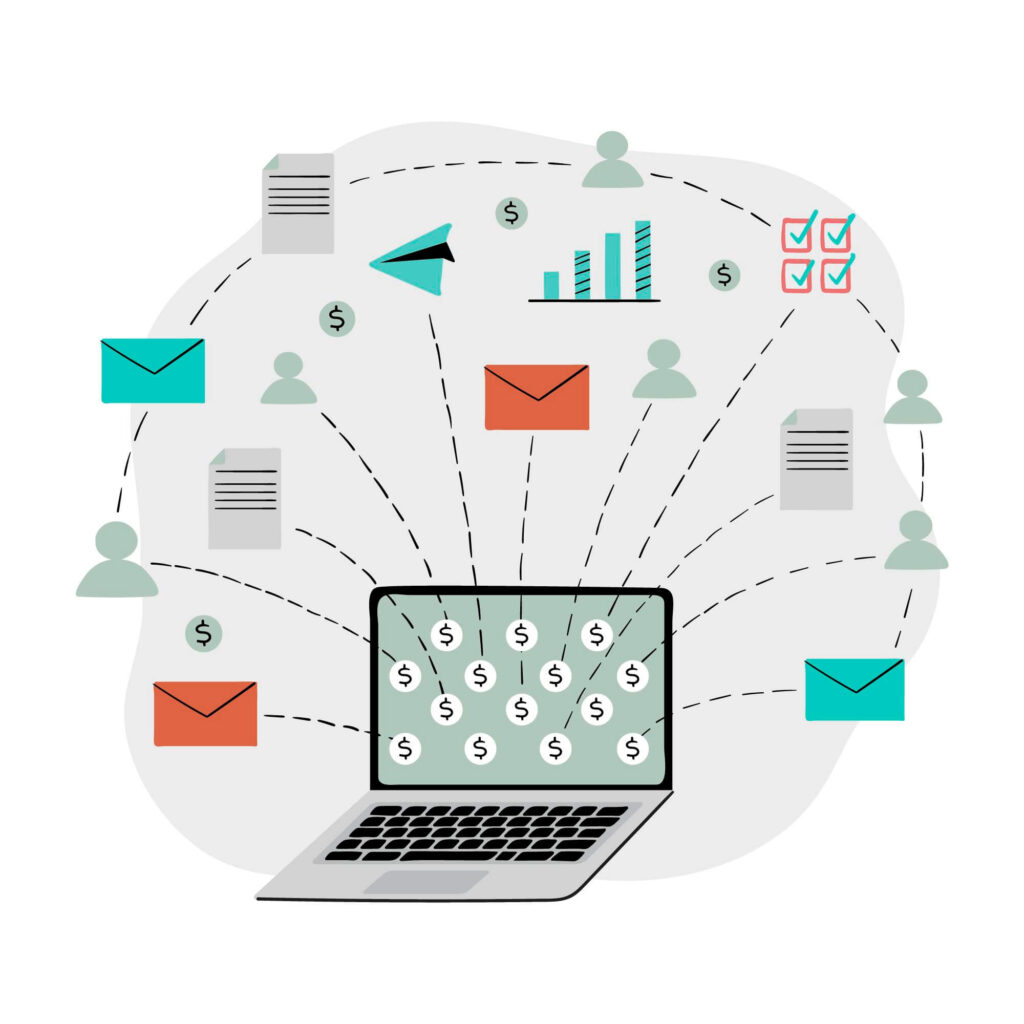
Convincing a (potential) customer to open your email is the first step in closing a sale. Securing a steady open rate is a sign of a solid, compelling email campaign.
Open rates vary depending on demographics or geographic location. Using emojis, caps, and excessive punctuation reads differently depending on the individual.
Even if they do open the email, 45% of readers have images blocked by default which would limit the open pixel from loading and contributing to inaccurately low open rate statistics.
Being aware of your email analytics is helpful when making comparisons but it may not reflect what’s actually happening in the inbox.
How to Test and Optimize Sales Email Subject Lines
The best way to improve your subject lines over time is to test them. Optimize performance by A/B testing different versions of your subject lines.
Testing two different variations of your subject lines provides irrefutable data on what works best with your audience. Your email platform should have built-in A/B testing functionality. If it doesn’t, find a new email outreach tool, like Replyify.
You can iteratively experiment with different structures, tones, and levels of personalization.
Monitor key metrics like:
- Open rates: Open rates higher than 20% suggest your subject line is good but could be improved.
- Click-through rates: If your email is getting opened but no one is clicking through on your links, then A/B test your Call to Action or connection statement.
- Reply rates: Compare the positive, negative, and ‘on the fence’ replies. Your sales email may be too aggressive or not offering an easy conversion event
Analyzing your campaign results can help refine your approach to tailor subject lines for your audience over time.
Don’t be afraid to try new things and break the mold. Use data and carve out a sample size of contacts to test new sales emails that consistently deliver results.
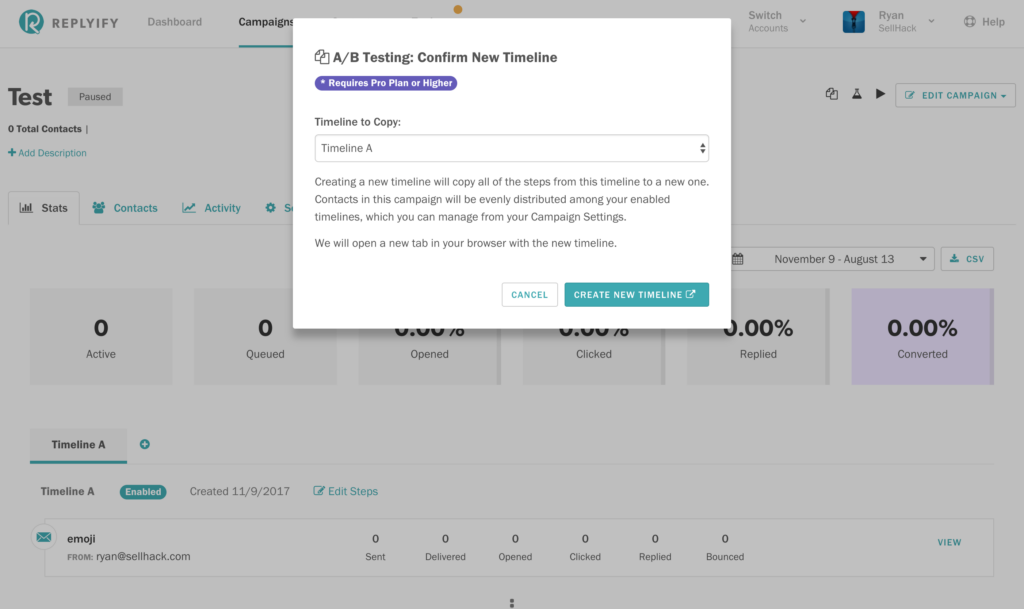
In the competitive world of B2B sales, crafting a compelling email subject line is a critical skill.
Email can connect you with a sales prospect, active lead or current customer within seconds.
Unread emails directly translate to missed opportunities and lost sales.
Before you press send, read your subject lines and email content out loud. If it sounds funky to say, then it will be even more difficult for your recipient to comprehend.
Time is money. You have 2.5 seconds to get to the point and make a good first impression.
Next steps: Want to generate more meetings with B2B cold prospects? Check out our Ultimate Guide for Cold Email for a deep dive on best practices, examples and strategies.

